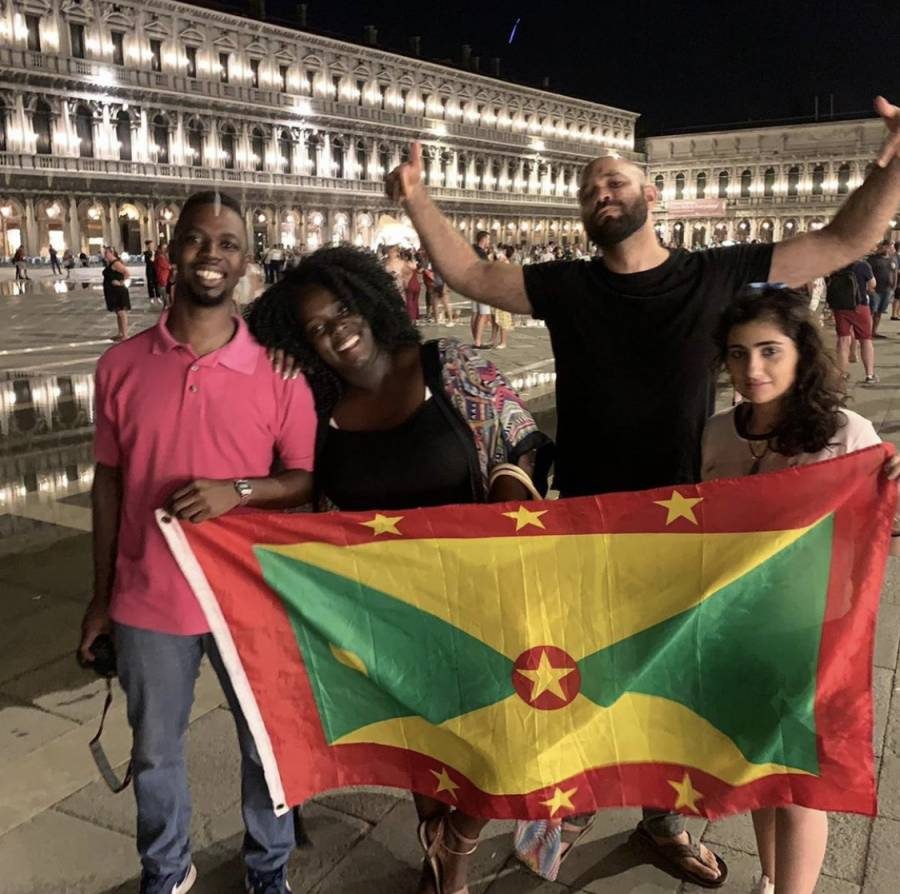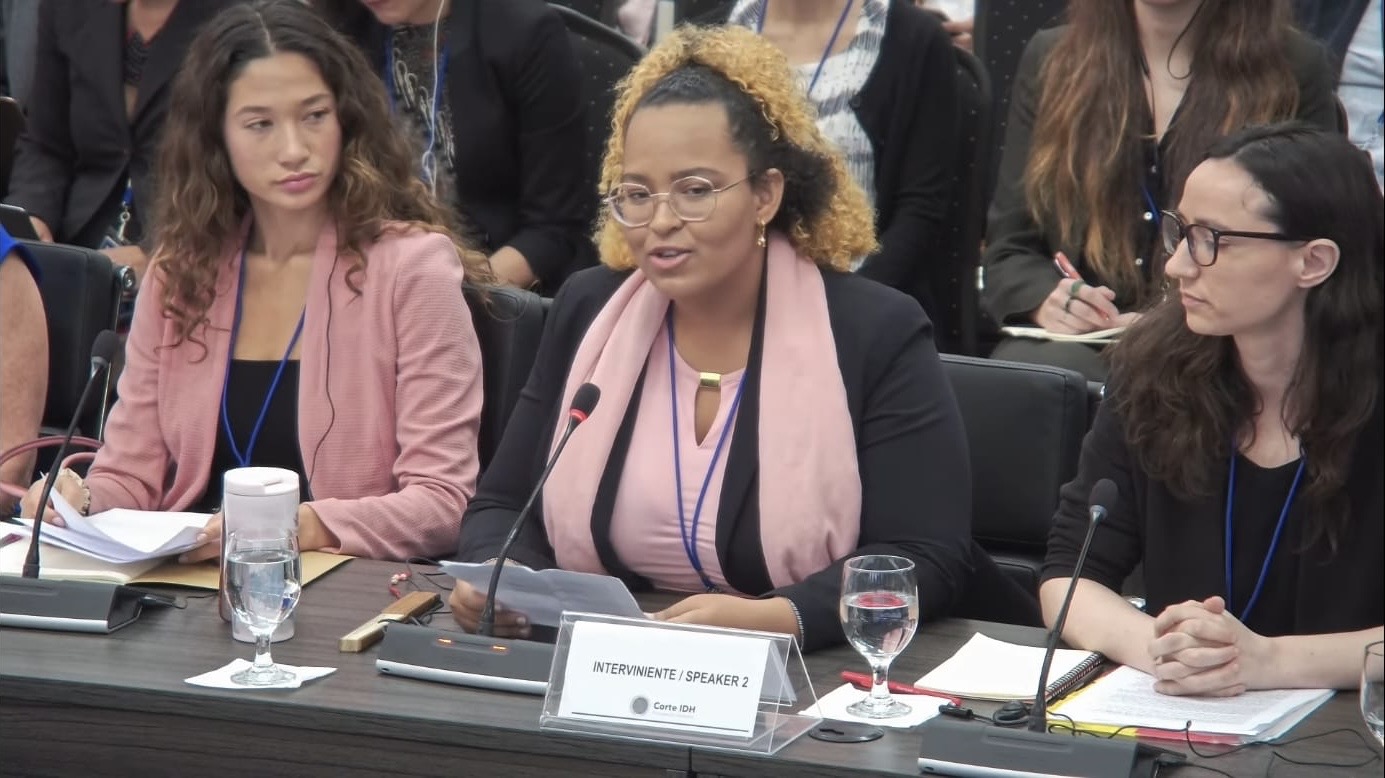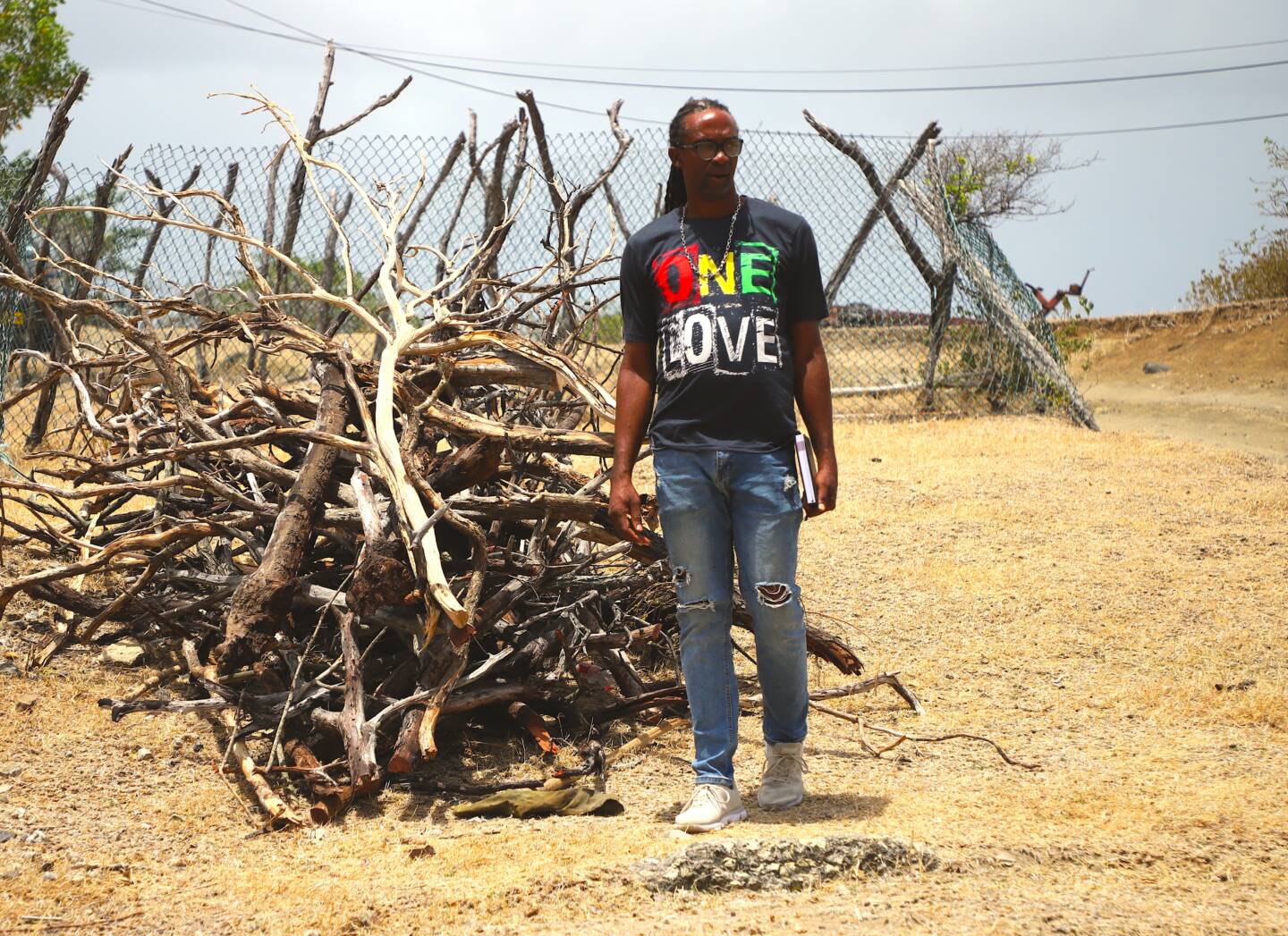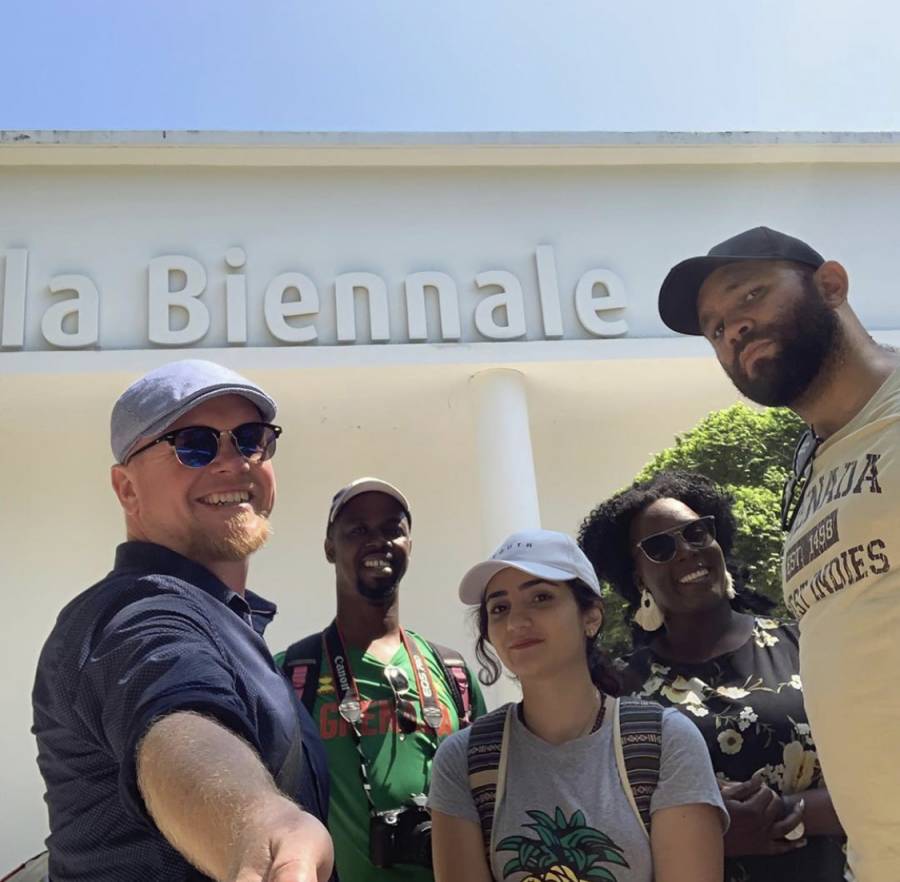by Samuel Ogilvie
Mind-blowing. Epic. Interesting. All descriptions used by some who have experienced the Venice Art Biennale for the first time. Being (as of the writing of this article) in the same boat myself, I venture to add another descriptor to the mix: eye-opening.
As a (somewhat) young visual creative working in Grenada, it’s rare to witness the global pinnacle of artistic endeavour in person, except perhaps through cinematic works. As such, in discovering the opportunity to attend and observe what the world considers as the Olympics of art through the Grenada Venice Intensive programme, I jumped at the chance.
There’s nothing, not even these words, that can really prepare you for the entire scope of what the Biennale – and Venice itself – has in store for you. But hopefully, this will be enough to whet one’s curiosity and appetite to experience it for oneself.
Let’s begin with the island of Venice, which is a work of art itself. Literally a man-made island from the 13th century, Venice has become a major tourist attraction. In fact, there are more visitors than actual Venetians, and it can be a little overwhelming to see the volume of humans walking through the narrow alley “streets” that count as Venice’s main thoroughfares.
Speaking of walking, be prepared to do a lot of that to get around: there are no terrestrial motor vehicles on the island, except for a moped I saw parked safely behind a showcase as a prop for a very fashionably-dressed mannequin. Gondolas, possibly the most famous Venetian mode of public transport, are now expensive tourist rides – which you can indulge in at your own leisure. Vaporettos and water taxis that ply the Grand Canal and smaller channels are the main methods of transportation in Venice, but even so, be prepared to do a fair share of walking. Travelling light is highly recommended, especially as the climate (at the time of my visit in July) was very much like Grenada’s.
You won’t be bored with all the walking though… Venice’s baroque architecture is a sight to behold, and their existence even today stands as a testament to the ingenuity of early Venetian builders. Time, however, has taken its toll, and the threat of buildings sinking into the unsanitary waters (a phenomenon coined as l’acqua alta) is evident at certain times of the year. Still, it is a wonder to see the multi-storied tenements line the canals with doors that open inches from water.
The Venice Art Biennale – now in its 58th iteration – is held every two years (as “Biennale” suggests), usually from May to November. With each new Biennale comes a new curator who selects individual artists and national representation through an application process. Though it has only been open to international participants officially since 2011, the number of national pavillions (areas where nations exhibit their art) have increased dramatically since then – and Grenada has had a pavillion consecutively since 2015! No small feat for one of the Caribbean’s smallest island nations.
This year’s Biennale has a record high of 91 nations, as well as a number of collateral events exhibiting throughout Venice, and even a few on nearby isles that fall under Venetian jurisdiction. Thus, visiting each and every pavillion almost feels like an engaging game of hide-and-seek… or perhaps treasure hunt, as there are some art gems to be discovered.
The curated creme-de-la-creme, however, are all gathered in two main venues: the Arsenale and the Giardini. You can easily spend a full day at just one of these vast locations and still feel like you’ve missed something, so densely packed are they with fine art presentations. The Giardini, in particular, is its own adventure – just when you think you’ve reached the end of an exhibit, there’s a little curtained doorway or path that leads you to even more eye candy.
But art is not just limited to eye-candy, which was truly the eye-opening thing for me at the Biennale. Many exhibits also had audio components to it, and for some, there were no restrictions on how close you were able to go… some pieces, you could even touch. For me, to be able to see and hear feel and hear these works of art, to gain almost a microscopic view of the materials used in their creation, to even get a whiff of the tangential smells that come with said materials – all this made it a revelatory experience for me.
It is inspiring, too, as some of what was on display seemed very possible to make with resources available in Grenada. A big part of what makes the Biennale so prestigious is the scale of the works on show – an aspect that we may find difficult to achieve here in Grenada. But the spectacle of huge works does not take away from it took to make them: thread, old pieces of cloth, water, hose, wood. This and more tells me that Grenada has what it takes to create world-class fine art.
As a videographer and actor, myself, I was intrigued by the amount of video art on display at all venues of the Biennale. Here I discovered the concept of multi-channel video, where multiple screens (or more so, projections) display synchronously or asynchronously but tied together by their audio track. So, for instance, in the case of a 2 channel video, one screen might display a person talking to another person off-camera, while the other, adjacent screen displays the other person listening and responding to the first person. The use of different channel videos was rather inventive in some exhibits and made me think of ways I could implement similar techniques in my own video work – albeit, converted to one channel use. And who knows what the future may hold? The seeds have definitely been sown in my consciousness to pursue more personal artistic expressions.
So, if you can make it to Venice by November, you’ll be able to bear witness to some of the most highly-regarded fine art in all the world. And if you can’t make it then, Venice is still a captivating location to visit, with no shortage of creative endeavours to experience such as live violin and classical music (a personal highlight for me), museums, grand cathedrals with panoramic views of the city and other notable ancient architecture. Nearby isles of Murano and Burano have their own artistic flavours – glasswork and lacework, respectively. If you miss having a sea bath, head to the island of Lido, where motor vehicles exist and a long, man-made beach of acceptable quality (you know we Grenadians have high beach standards) awaits you.

Just don’t set foot in the waters of Venice city proper – it’s illegal and dangerous, health-wise. Bottled water is cheap and available, so do make sure to stay hydrated with all that walking you’ll definitely be doing. And sunblock lotion or headwear is advised too. Food and other drinks can be expensive, especially if you plan on eating at a restaurant for every meal. But oh, the food… you really can’t go wrong with any menu selection in Venice.
Grenada’s presence in Venice for the Art Biennale cannot be lauded enough. Many other countries have tried to earn a spot at this prestigious showcase, and for Grenada to be able to present for the third time in a row is a testament to the quality of artists coming from our shores. It has made a way for Grenadians to be able to travel and experience places and things we may otherwise not have had the chance to. The Grenada Arts Council, Art School Greenz and the government of Grenada are to be commended for their hard work in getting Grenada to be recognised on the global art stage, and for creating the opportunity for myself and other participants of the Grenada Venice Intensive to be able to partake in the event.
Art opens doors.
Since the Grenada Pavilion at Biennale di Venezia was opened in early May, much has happened in and for Grenada.
- The Chocolate Festival
- The Chelsea Flower Show
- The Music Festival
- Regatta in Carriacou, and of course,
- Carnival — all showing off the best of Grenada
And all this while, on a daily basis, visitors in Venice, Italy have been trekking through the Grenada Pavilion at Palazzo Albrizzi in Cannaregio. Many, many visitors. This exhibition continues through 24 November. A good long run exposing Grenada to many for the first time. See the website www.grenadavenice.org to learn more.
One set of visitors were the young creatives from Grenada who travelled there in July to experience the Biennale di Venezia first hand. Asher Mains led the group including Haron Forteau, Tamika Gilbert, Carol Youssef and Samuel Ogilvie, who has written about his impressions.






















